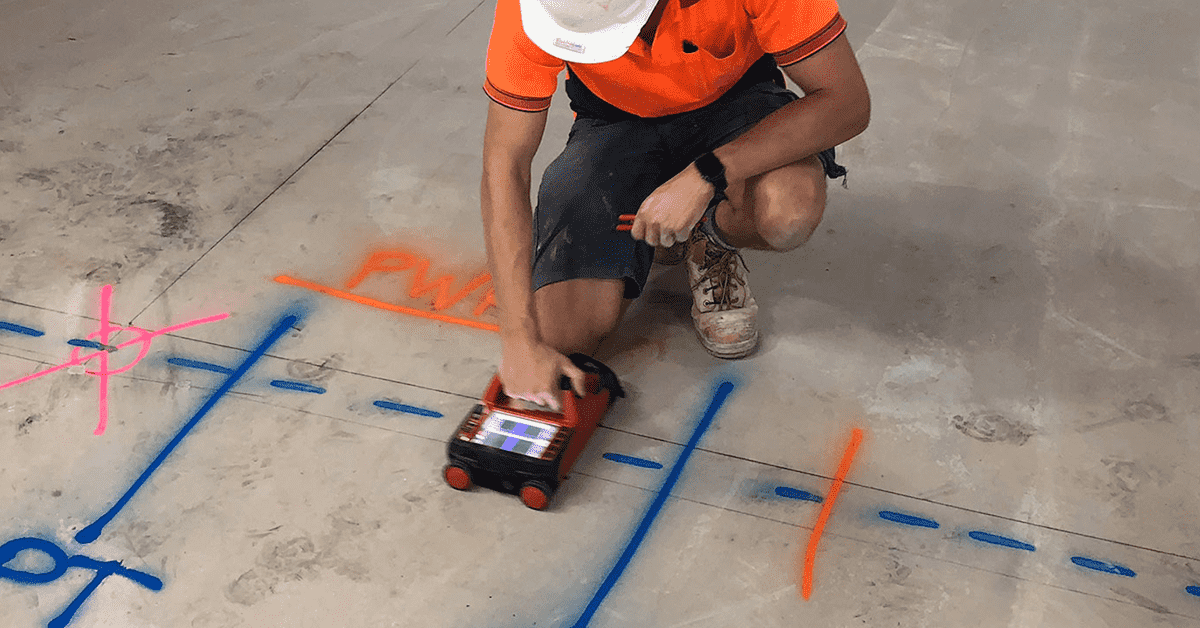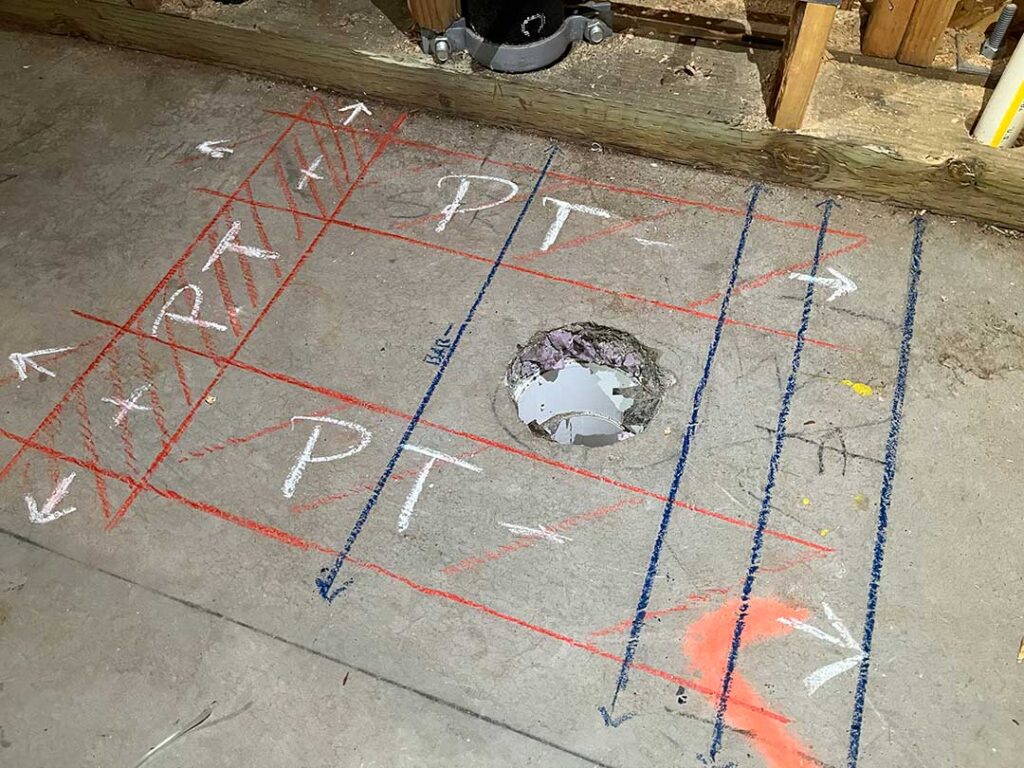Reveal the Transformative Power of Concrete Scanning in Making Best Use Of Effectiveness and Safety And Security
Concrete scanning has actually arised as an essential tool in the building and construction industry, offering unmatched benefits in improving project effectiveness and ensuring safety requirements. The transformative power of concrete scanning exists in its ability to offer in-depth understandings and real-time information, transforming how tasks are prepared and carried out.
Relevance of Concrete Scanning
Ensuring the architectural honesty and safety and security of building projects starts with the critical action of performing comprehensive concrete scanning. Concrete scanning is a non-destructive approach utilized to identify and map subsurface aspects within concrete frameworks. This procedure is important in determining potential hazards, such as rebar, post-tension cable televisions, and conduits, that may be hidden within the concrete. By using advanced modern technologies like ground-penetrating radar (GPR) and electromagnetic induction, building groups can accurately locate these aspects without causing any type of damage to the framework.
The relevance of concrete scanning can not be overstated, as it plays an important duty in preventing accidents, decreasing job delays, and making certain the long-term durability of the construction. By determining prospective threats before the building phase begins, home builders can implement proper safety and security actions and make educated decisions pertaining to the style and implementation of the task. Furthermore, concrete scanning assists in maximizing task timelines and budget by staying clear of unanticipated costs and hold-ups that might arise because of unpredicted obstructions within the concrete. Inevitably, investing in complete concrete scanning is a positive approach that improves both efficiency and safety and security in construction projects.
Just How Concrete Scanning Works
Concrete scanning operates as a vital device in building and construction tasks by utilizing sophisticated innovations to spot and map subsurface elements without creating architectural damage. Ground Passing Through Radar (GPR) and Electromagnetic Induction (EMI) are two key techniques utilized in concrete scanning. GPR works by releasing high-frequency radar pulses into the surface area, which get better when they run into subsurface objects or spaces. The time considered the signal to return indicates the deepness and area of the objects. EMI, on the various other hand, uses magnetic fields to determine variations in material make-ups, such as identifying rebar or conduits within concrete structures.
Throughout the scanning procedure, the data accumulated is assessed in real-time, enabling immediate recognition of prospective hazards or obstacles underneath the surface area. By utilizing these advanced innovations, concrete scanning significantly minimizes the threat of expensive problems and injuries on construction websites.
Benefits of Concrete Scanning
Using advanced scanning technologies in building tasks supplies a wide range of benefits, enhancing both efficiency and safety and security on-site. Among the key benefits of concrete scanning is the capability to find and locate embedded objects such as rebar, post-tension cords, and channels precisely. By determining these elements prior to exploration or reducing right into concrete frameworks, the threat of unexpected strikes is considerably minimized, stopping prospective injuries to employees and damages to the framework itself. Concrete scanning assists in preparation and designing a lot more efficiently, as it gives precise info regarding the location and deepness of architectural parts.

Situation Researches: Concrete Scanning Success

In another case, a building firm made use of 3D concrete scanning to assess the condition of maturing concrete frameworks in a historic structure. The comprehensive scans offered beneficial insights into the level of wear and tear and aided prioritize upkeep initiatives successfully. By proactively attending to locations of problem determined with scanning, the business was able to prolong the life expectancy of the framework and make sure occupant safety.
These study highlight the transformative power of concrete scanning in improving effectiveness, accuracy, and safety and security in building and construction tasks.
Carrying Out Concrete Scanning in Projects
Applying sophisticated scanning modern technologies during building and construction tasks has ended up being increasingly crucial for boosting accuracy and safety and security. By incorporating concrete scanning right into project preparation and execution, building groups can recognize possible risks, such as rebar or post-tension wires, concealed within concrete frameworks. This proactive strategy minimizes the risk of mishaps, delays, and pricey rework, eventually leading to extra efficient task timelines and budgets.
To apply concrete scanning efficiently, project managers should team up closely with skilled scanning experts to determine the most suitable scanning techniques for the details project requirements. Involving scanning specialists from the very early phases of a task makes it possible for the group to create extensive scanning strategies that address essential locations of issue and guarantee comprehensive information collection.
Moreover, incorporating concrete scanning right into regular project process can improve decision-making procedures, as real-time scan information offers weblink immediate insights into the condition of concrete structures - Concrete Scanning. This data-driven strategy promotes informed analytical and allows groups to make changes quickly, cultivating a society of efficiency and safety and security throughout the task lifecycle
Conclusion
Finally, concrete scanning plays an essential role in boosting performance and security in construction jobs. By utilizing sophisticated modern technology to spot and map out underlying frameworks within concrete, this process helps to avoid costly errors, ensure structural stability, and minimize threats on website. With the ability to discover surprise aspects and give precise data, concrete scanning proves to be an important tool for maximizing project click reference end results and taking full advantage of overall success.
Concrete scanning is a non-destructive approach made use of to find and map subsurface components within concrete frameworks. Additionally, concrete scanning aids in maximizing task timelines and budget plan by preventing unforeseen costs and delays that may arise due to unanticipated blockages within the concrete. One significant instance research study includes a massive remodelling job where concrete scanning played an essential function in guaranteeing project success.In another instance, a construction company used 3D concrete scanning to examine the condition of aging concrete frameworks in a historical building. By incorporating concrete scanning Read Full Article right into task planning and execution, building groups can identify potential threats, such as rebar or post-tension cords, hidden within concrete structures.